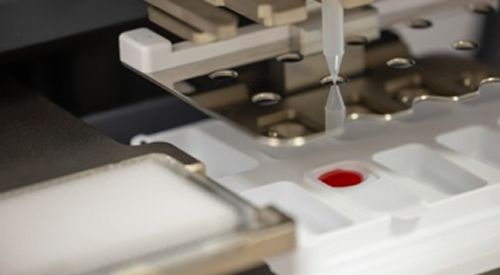Mastocytosis
"Mastocytosis can cause a wide variety of symptoms, which can sometimes be worrisome. Accurate diagnosis and personalized follow-up are key for patients to live safely and with quality of life."
DR. MARTA FERRER
SPECIALIST. ALLERGY AND IMMUNOLOGY DEPARTMENT

What is mastocytosis?
Mastocytosis is a group of rare diseases, with an estimated prevalence of fewer than 5 cases per 10,000 people. Its main characteristic is the abnormal proliferation and accumulation of immune system cells called mast cells. These cells, which originate in the bone marrow, accumulate in different tissues, mainly in the skin.
It is important to distinguish its two main forms:
- Cutaneous mastocytosis (CM), more typical in childhood, where abnormal mast cells accumulate only in the skin.
- Systemic mastocytosis (SM), more common in adults, in which, in addition to the skin, internal organs such as the bone marrow, spleen, liver, or gastrointestinal tract are also affected.
Although most patients, both children and adults, have an indolent clinical course and a good prognosis, the importance of an accurate diagnosis is essential. Mast cells can release substances such as histamine and trigger anything from itching or skin spots to abdominal pain or severe reactions like anaphylaxis. Proper medical follow-up is crucial to control symptoms and improve quality of life.

What are the symptoms of mastocytosis?
The most common forms of mastocytosis present with skin symptoms and allergic reaction-like episodes, while advanced forms produce more severe complications due to organ damage
Mastocytosis can cause very different symptoms depending on two main mechanisms:
- Release of chemical substances by mast cells (such as histamine).
- Infiltration of these mast cells into internal organs, which is more typical of advanced forms.
Symptoms due to mediator release
These are the most frequent and resemble allergic reactions:
- Skin-related: brown or reddish spots that may itch and turn red with heat or scratching (Darier’s sign), persistent itching, sudden flushing episodes, and in young children, blisters over the lesions.
- General symptoms: abdominal pain, diarrhea, nausea, heartburn, palpitations, or low blood pressure.
- Anaphylaxis: in some patients, severe allergic reactions may occur that can be life-threatening, triggered by insect stings, medications, alcohol, or certain foods.
- Neuropsychiatric symptoms: fatigue, headaches, irritability, or problems with memory and concentration.
Symptoms due to organ infiltration (advanced systemic mastocytosis)
In the more aggressive forms of mastocytosis, mast cells accumulate in internal organs. This infiltration can damage tissues and disrupt their normal function, leading to more severe symptoms:
- Organ enlargement: the liver (hepatomegaly), spleen (splenomegaly), and lymph nodes (lymphadenopathy) may become enlarged. Enlargement of the spleen, in particular, often causes pain in the upper left side of the abdomen.
- Bone marrow involvement: may lead to cytopenias, meaning a decrease in blood cells: anemia (low red blood cells), low platelets (increasing the risk of bruising or bleeding), or leukopenia (low white blood cells and reduced defenses).
- Bone problems: chronic pain, osteoporosis, spontaneous fractures, and bone lesions are relatively common, especially in young men without other risk factors.
- General or constitutional symptoms: unexplained weight loss, severe fatigue, and weakness, almost exclusive to the more aggressive variants.
- Liver dysfunction: infiltration of the liver may cause fluid accumulation in the abdomen (ascites) and increased pressure in the liver’s blood vessels (portal hypertension).
- Intestinal malabsorption: when the digestive tract is affected, the absorption of nutrients is impaired, which may lead to weight loss and low levels of proteins such as albumin.
Do you have any of these symptoms?
If you suspect you are suffering from any of the above symptoms,
you should consult a medical specialist for diagnosis
What are the causes of mastocytosis?
Mastocytosis is caused, in most cases, by a genetic alteration in a gene called KIT, which regulates the life and function of mast cells. A mutation in this gene causes mast cells to become overactive and multiply uncontrollably, accumulating in the skin and other organs and releasing chemical substances excessively.
It is important to note that it is usually not an inherited disease. The mutation appears spontaneously in certain cells of the body and is therefore not passed on to children. Only in very rare cases has a familial component been observed.
Complications of mastocytosis
Complications may result from either the excessive release of chemical substances or from organ infiltration. The most serious is anaphylaxis, a potentially life-threatening allergic reaction triggered by insect stings, medications, or certain foods.
In advanced forms, the disease may cause bone marrow problems (anemia, low platelets), enlargement of the liver and spleen, bone complications (osteoporosis, fractures), or difficulty absorbing nutrients. Although rare, there is a risk of progression to more aggressive variants.
These symptoms, along with fatigue and emotional impact, can significantly affect quality of life.
How is mastocytosis diagnosed?

Diagnosis combines clinical suspicion with specific tests. The process begins with the medical history and physical examination, where skin lesions are the most frequent clue. Brown or reddish spots that become red and itchy when scratched (Darier’s sign) strongly point to the diagnosis. To confirm the disease, a skin biopsy may be necessary, and in cases suspected of systemic forms, a bone marrow biopsy. These studies demonstrate the abnormal accumulation of mast cells.
Genetic testing to detect the KIT gene mutation is a key step, as it is present in most adults with systemic mastocytosis.
Blood levels of tryptase, an enzyme produced by mast cells, are also commonly measured, as higher values may indicate a greater disease burden. Depending on symptoms and age, additional tests such as complete blood counts, ultrasounds, or bone density scans may be requested to assess the extent of the disease and its possible complications.
How is mastocytosis treated?
Management of mastocytosis in specialized units is essential to improve the quality of life of patients
There is currently no cure for mastocytosis. The goal of treatment is to control symptoms, prevent complications, and, in more advanced cases, reduce the number of abnormal mast cells. Therapeutic strategies vary depending on the type of mastocytosis and the severity of the disease.
Symptomatic treatment
This is the cornerstone of therapy for most patients, especially in cutaneous and indolent forms. The aim is to reduce the effects of the chemical mediators released by mast cells:
- H1 and H2 antihistamines: to control itching, hives, flushing, and digestive discomfort.
- Mast cell stabilizers: such as sodium cromoglycate or ketotifen, useful for gastrointestinal symptoms.
- Leukotriene antagonists and proton pump inhibitors: to relieve digestive problems and excess stomach acid.
- Topical corticosteroids or phototherapy: used for extensive or resistant skin lesions.
- Systemic corticosteroids: reserved for more severe or refractory cases.
It is also recommended to avoid triggers such as alcohol, stress, certain medications (NSAIDs, opioids), spicy foods, or insect stings.
Anaphylaxis is one of the most serious complications of mastocytosis and can occur unexpectedly. It is a generalized allergic reaction that can be life-threatening if not treated immediately. In patients with mastocytosis, the likelihood of experiencing anaphylaxis is much higher than in the general population.
Typical symptoms include sudden flushing, widespread itching, difficulty breathing, dizziness, sudden drops in blood pressure, rapid heartbeat, and in severe cases, loss of consciousness. In adults without skin lesions, cardiovascular symptoms may predominate, which can delay the diagnosis.
The most common triggers are bee or wasp stings, certain medications (anti-inflammatories, opioids, radiological contrast agents), alcohol, spicy foods, or even physical or emotional stress. Avoiding these factors is an essential part of prevention.
It is essential to always carry an adrenaline (epinephrine) auto-injector. This device acts quickly to reverse the most dangerous symptoms, such as low blood pressure or breathing difficulties. Both the patient and their close contacts should be trained on how and when to use it. In addition, the doctor may recommend the combined use of antihistamines and corticosteroids after the episode to help stabilize the patient.
In aggressive systemic mastocytosis or in cases with organ involvement, treatment aims to reduce the number of mast cells and control organ damage.
Conventional therapies: interferon-alpha, cladribine, or hydroxyurea in some cases.
KIT inhibitors:
- Midostaurin (Rydapt®).
- Avapritinib (Ayvakit®), effective against the KIT D816V mutation, even in indolent forms.
- Imatinib, in patients without the KIT D816V mutation.
Stem cell transplantation: an exceptional option in young patients with very aggressive forms of the disease who do not respond to other treatments.
New drugs under investigation: such as Bezulastinib and Elenestinib, which are showing promising results in clinical trials.
Where do we treat it?
IN NAVARRE AND MADRID
Department of Allergology
of the Clínica Universidad de Navarra
The Department of Allergy and Immunology of the Clinic is part of the Global Allergy and Asthma European Network, composed of the 25 best departments of Allergy in Europe, chosen for their scientific excellence, multidisciplinary work, teaching and international activities.
We have the most advanced diagnostic techniques, we are at the forefront of research and we collaborate with the best experts. We have more than 50 years of experience in the field.
What diseases do we treat?

Why at the Clinica?
- More than 50 years of experience.
- Pioneers in the technique of molecular diagnosis by microarray.
- Nursing specialized in allergic diseases and their care.








